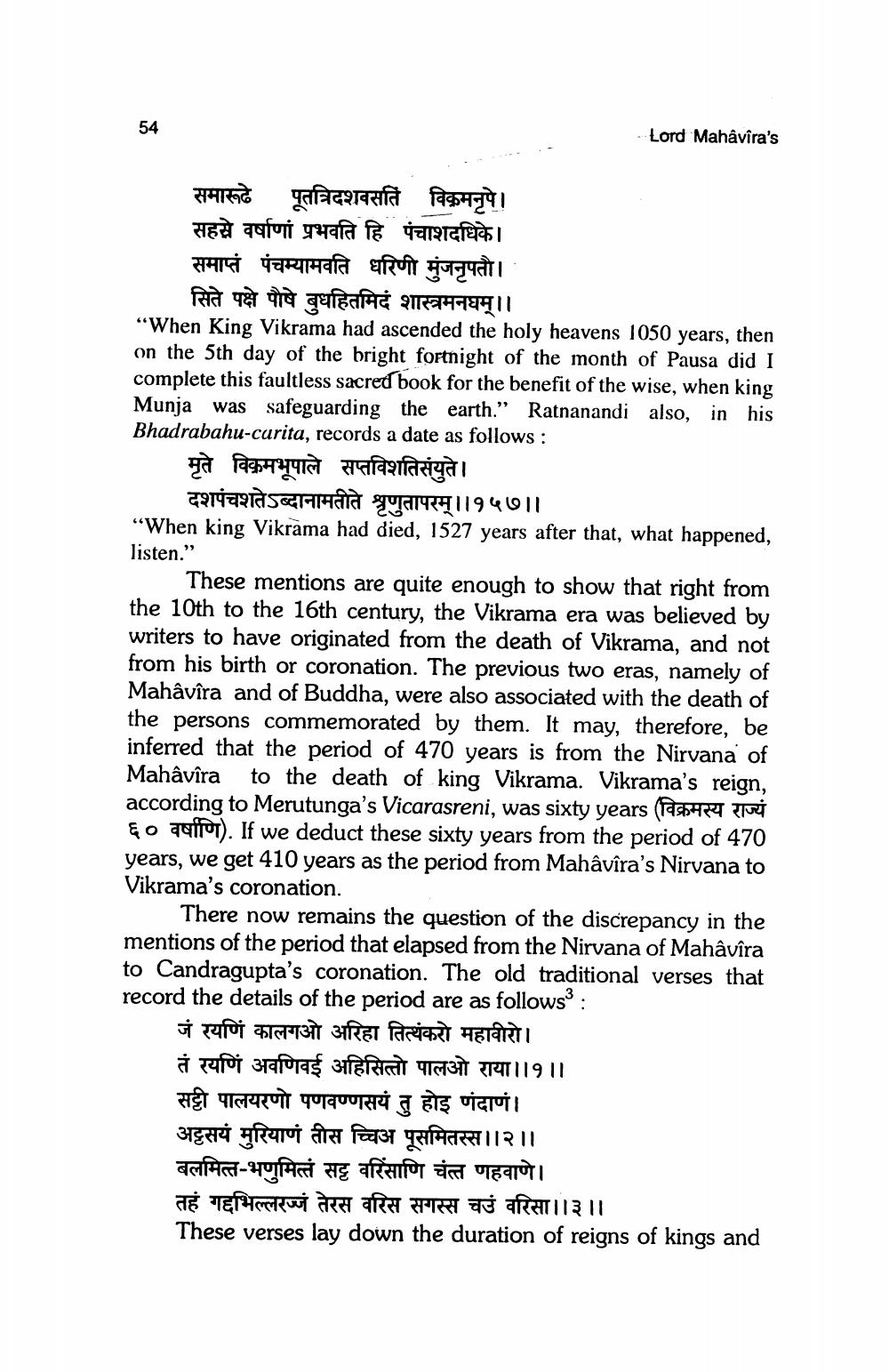________________
54
Lord Mahavira's
विक्रमनृपे ।
समारूढे पूतत्रिदशवसतिं सहस्रे वर्षाणां प्रभवति हि पंचाशदधिके । समाप्तं पंचम्यामवति धरिणी मुंजनृपतौ ।
सिते पक्षे पौषे बुधहितमिदं शास्त्रमनघम् ।।
"When King Vikrama had ascended the holy heavens 1050 years, then on the 5th day of the bright fortnight of the month of Pausa did I complete this faultless sacred book for the benefit of the wise, when king Munja was safeguarding the earth." Ratnanandi also, in his Bhadrabahu-carita, records a date as follows :
मृते विक्रमभूपाले सप्तविशतिसंयुते ।
दशपंचशतेऽब्दानामतीते श्रृणुतापरम्।।१५७।।
"When king Vikrama had died, 1527 years after that, what happened, listen."
These mentions are quite enough to show that right from the 10th to the 16th century, the Vikrama era was believed by writers to have originated from the death of Vikrama, and not from his birth or coronation. The previous two eras, namely of Mahâvîra and of Buddha, were also associated with the death of the persons commemorated by them. It may, therefore, be inferred that the period of 470 years is from the Nirvana of Mahâvîra to the death of king Vikrama. Vikrama's reign, according to Merutunga's Vicarasreni, was sixty years (विक्रमस्य राज्यं ६० वर्षाणि). If we deduct these sixty years from the period of 470 years, we get 410 years as the period from Mahavira's Nirvana to Vikrama's coronation.
There now remains the question of the discrepancy in the mentions of the period that elapsed from the Nirvana of Mahâvîra to Candragupta's coronation. The old traditional verses that record the details of the period are as follows3:
जं यणि कालगओ अरिहा तित्थंकरो महावीरो ।
तं रयणं अवणिवई अहिसित्तो पालओ राया ।।१।। सट्टी पायरणो पणवण्णसयं तु होइ णंदाणं । अट्टयं मुरियाणं तीस च्चिअ पूसमितस्स ।। २ । बलमित्त भणुमित्तं सट्ट वरिसाणि चंत्त णहवाणे ।
तहं गद्दभिल्लरज्जं तेरस वरिस सगस्स चउं वरिसा ।। ३ ।।
These verses lay down the duration of reigns of kings and




